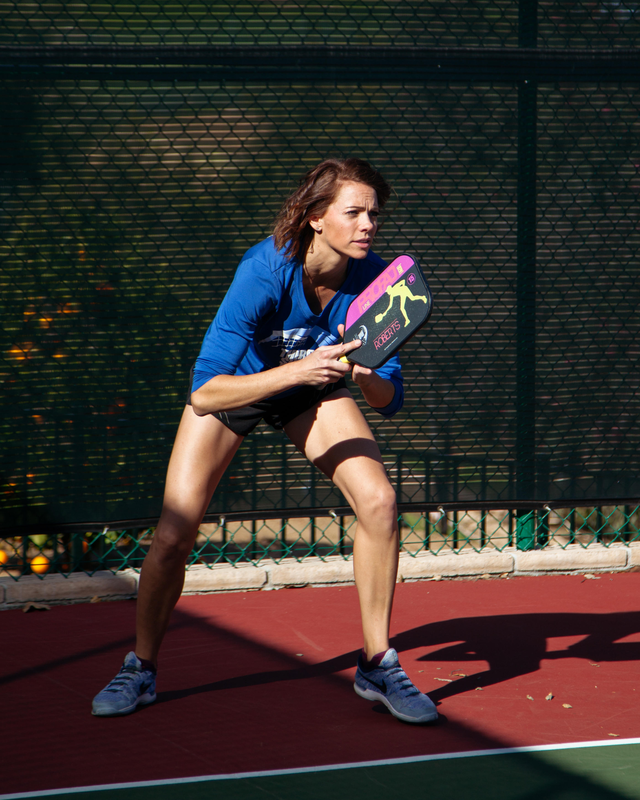Pickleball can be a great way to get your heart rate up and your
body moving. It combines running, jumping, extension and coordination,
but unfortunately subjecting our joints to daily wear and tear can lead to
injures. It’s imperative that pickleball players pay close attention to the
care and protection of their joints.
For your lower body, the game involves a lot of stops and starts
– pivoting, jumping, sprinting, stopping and lunging. In order to do this, your
knee must flex and extend while your hips and ankles roll and twist to
facilitate the action. If your hips tighten up or your ankles grow weak,
your knee joints are put in a vulnerable position.
Your upper body joints, on the other hand, are performing
repetitive, high impact hits that leave your shoulders, elbows, and wrists
liable to strain and tearing.
Maintaining healthy joints is no longer the prerogative of the
elderly. Young and old alike need to take steps to protect their joints now to keep
joints strong, agile, and healthy to perform their best.
What Happens to Our Joints As We Age?
The joints in our bodies are of different types but they all work based on the
same principle – they connect our bones to each other and give us the ability
to move, lift, bend, and reach. Each joint consists of ligaments or connective
tissues as well as cartilage that provides the cushioning between the joints
and prevent the bones from rubbing against each other.
The degeneration of our joints is due to a number of factors
including:
- Age -
As we grow older, the cartilage wears down and gets thinner. It changes
from being smooth to being fissured and as a result gets damaged more
easily.
- Past
injuries and inflammation –Any
past injury even if minor can contribute to future joint conditions later
in life as they cause low levels of inflammation that change the actual biomechanical
structure of the cartilage. This, in the long run, destroys the cartilage
at the place of injury.
- Loss
of muscle mass – As you age, your
muscles naturally lose mass. When this happens, the joints take on the
responsibility to absorb the shocks that occur on a day-to-day basis and
can become more and more damaged.
- Being
overweight – The heavier you
are, the more weight the joint has to carry. In the long run, this could
be extremely detrimental to the cartilage, especially in areas such as the
knees and ankles.
- Overuse
of Joints - Overuse of a particular
joint because of occupation or sports. For instance, playing pickleball
regularly can lead to overuse of the elbow joint and lead to “tennis
elbow” which signals the beginnings of joint deterioration.
How to take care of your joints:
- Warm-up – Before you start play, do some light warm up exercises like
stretching, jogging, or core exercises to prepare your body for the game.
Warming up for about 5 to 10 minutes before playing increases your blood
circulation and muscle temperature. This provides critical muscles and joint
tissues with more oxygen, and helps them contract and relax faster, which helps
prevent muscle tear.
- Wear appropriate shoes – Never play pickleball in
running shoes. They are highly inappropriate for pickleball as they are
designed for sagittal plane movements, and not intended for side-to-side
lateral plane motions. Instead, wear a well-fitting pair of court shoes. Such
shoes allow a lot of brisk side-to-side and changing movements which are common
in pickleball.
- Learn how to take a fall well
and Bend your knees – Players generally back-peddle when they want to land a lob shot.
But back-peddling can be dangerous, especially if you are not a seasoned
pickleball player. You may lose your footing and take a bad fall. A better way
to play lob shots is to turn your back towards your opponent and chase the
ball. Most debilitating injuries in pickleball occur during falls. Therefore,
it is advisable to learn how to fall intelligently without causing injury to
yourself. The best way to counter the impact of a fall is to roll on the ground
and not try to break or stop the fall with an extended arm. This can
potentially fracture your wrist and cause other serious injuries. Avoid bending your back or waist while playing pickleball. Learn
to bend at your knees and coil and uncoil your upper body. Bending forward from
the waist puts a lot of pressure on your spine and back muscles. This can lead
to long-term back injuries. Train yourself to bend at your knees and keep your
back relaxed.
- Maintain a healthy weight – By maintaining a healthy and reasonable weight, you will
decrease the load on your joints and reduce further wear and tear of the
cartilage.
- Include a range of workouts – Exercising should involve a range of different
activities. You can incorporate low impact routines such as swimming or walking
along with strength training (weights) and stretching exercises like yoga or
pilates for consistent results. All this will help reduce stiffness in the
joints and reverse or at the very least delay further damage.
- Movement and posture – Try not to stay in one position for too long. Stretch to
release the tension from your joints and keep them from stiffening at regular
intervals. Maintain good posture. When you stand, keep your legs hip width
apart and throw your shoulders back. When you sit, keep your feet, knees and
hips at 90-degree angles.
- Relax – Relieve stress by
using relaxation methods such as meditation and deep breathing. It has
been proven that a stress free mind has a positive effect on one’s overall
health as well.
- Eat wisely – Studies show that eating
oily fish such as salmon and tuna that are rich in omega-3 fatty acids may
reduce inflammation in the joints that are the source of pain. Vitamin D may
also protect your joints, so ensure that you have at least 400 to 800 units of
vitamin D daily. Your body also needs a balanced diet in terms of a wide
variety of fruits and vegetables, meat and/or fish, dairy products, and carbs.
Once you take a proactive approach to your health, the results
could trigger better health for your joints, leading to a better quality of
life you can enjoy and better performance on the courts.

